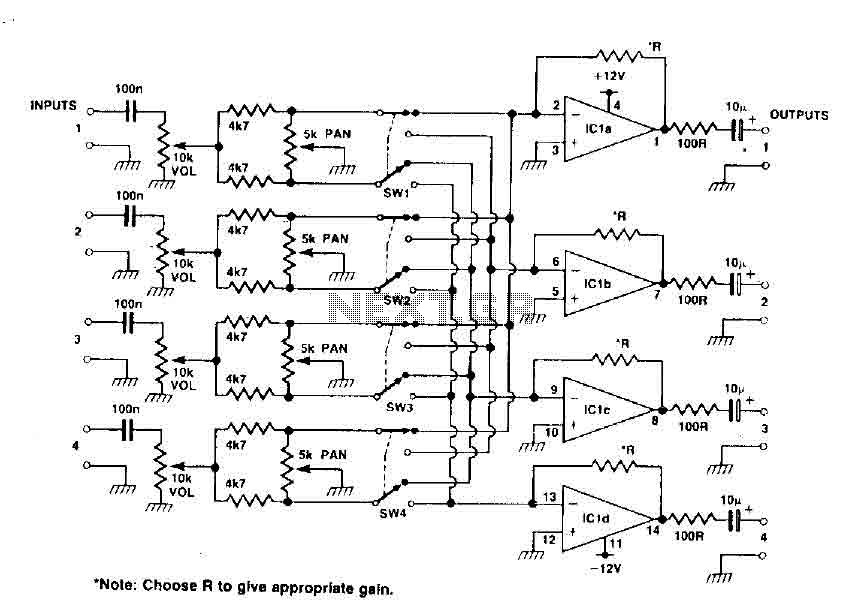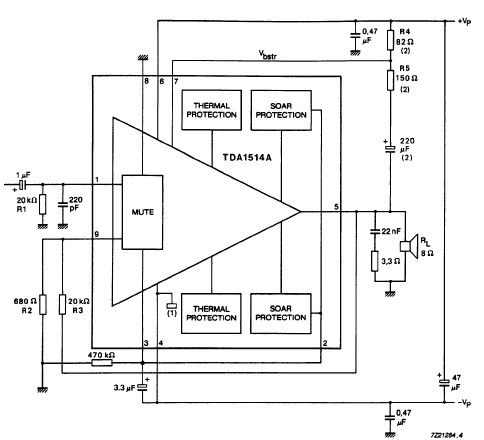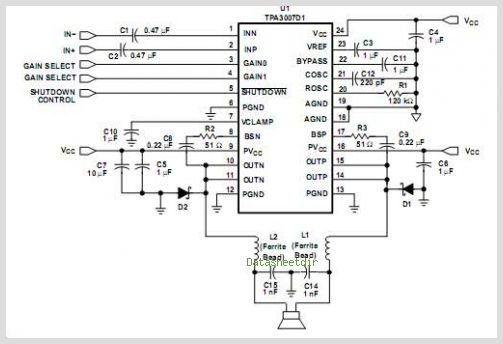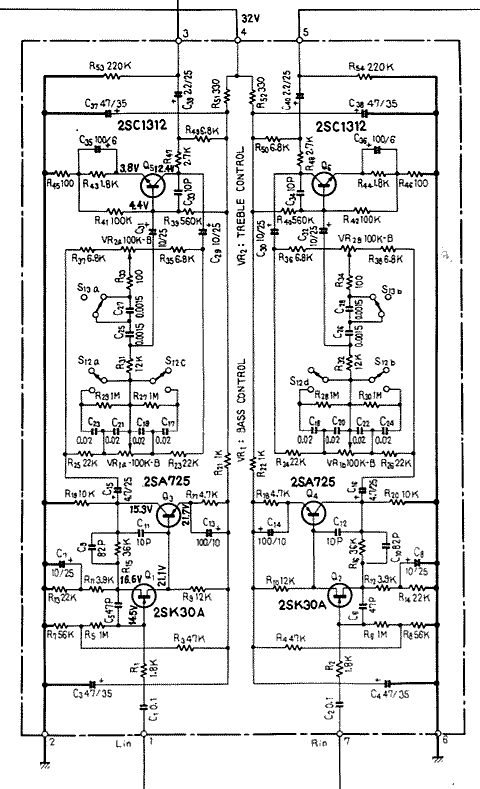
4 channel audio mixer with TL074

This circuit functions as a mixer for stereo tracks, utilizing a quad operational amplifier IC to provide gain for each track. The pan control allows for panning between two tracks when the switch is set to high, and when set to low, it enables panning between tracks three and four, allowing for additional channels to be incorporated.
An operational amplifier such as the TL074 or a similar model is appropriate for this application.
The circuit design employs a quad op-amp configuration, which is beneficial for audio mixing applications due to its ability to amplify multiple signals simultaneously. Each op-amp within the TL074 can be configured to handle individual audio signals, providing the necessary gain to ensure that the output levels are adequate for further processing or amplification.
The pan control circuitry typically consists of variable resistors or potentiometers that adjust the amplitude of the signals routed to the left and right outputs. When the pan switch is in the high position, it limits the panning capabilities to two tracks, ensuring a focused stereo image. Conversely, switching to the low position allows for a broader mixing range, enabling the user to blend signals from tracks three and four effectively.
In constructing this mixer circuit, careful attention should be paid to the power supply requirements of the TL074, which typically operates on a dual power supply (e.g., ±15V). Bypass capacitors should be included close to the power pins of the op-amps to minimize noise and ensure stable operation.
The signal path should be designed to minimize interference and maintain audio fidelity. Shielded cables may be utilized for input and output connections to prevent unwanted electromagnetic interference. Additionally, the layout of the circuit board should prioritize short signal paths and proper grounding techniques to further enhance the performance of the mixer.
Overall, this circuit provides a versatile solution for mixing stereo audio tracks, suitable for various applications in live sound, recording studios, and multimedia projects.This circuit can be used as a mixer and a stereo track four. The quad op-RNAP IC gives a little gain for each track, the pan control provides panning between one and two tracks with the switch to high, and with the switch to low, it is possible to pan between the tracks and three four channels can be added. An op amp is suitable for ICI TL074 or similar.
An operational amplifier such as the TL074 or a similar model is appropriate for this application.
The circuit design employs a quad op-amp configuration, which is beneficial for audio mixing applications due to its ability to amplify multiple signals simultaneously. Each op-amp within the TL074 can be configured to handle individual audio signals, providing the necessary gain to ensure that the output levels are adequate for further processing or amplification.
The pan control circuitry typically consists of variable resistors or potentiometers that adjust the amplitude of the signals routed to the left and right outputs. When the pan switch is in the high position, it limits the panning capabilities to two tracks, ensuring a focused stereo image. Conversely, switching to the low position allows for a broader mixing range, enabling the user to blend signals from tracks three and four effectively.
In constructing this mixer circuit, careful attention should be paid to the power supply requirements of the TL074, which typically operates on a dual power supply (e.g., ±15V). Bypass capacitors should be included close to the power pins of the op-amps to minimize noise and ensure stable operation.
The signal path should be designed to minimize interference and maintain audio fidelity. Shielded cables may be utilized for input and output connections to prevent unwanted electromagnetic interference. Additionally, the layout of the circuit board should prioritize short signal paths and proper grounding techniques to further enhance the performance of the mixer.
Overall, this circuit provides a versatile solution for mixing stereo audio tracks, suitable for various applications in live sound, recording studios, and multimedia projects.This circuit can be used as a mixer and a stereo track four. The quad op-RNAP IC gives a little gain for each track, the pan control provides panning between one and two tracks with the switch to high, and with the switch to low, it is possible to pan between the tracks and three four channels can be added. An op amp is suitable for ICI TL074 or similar.





